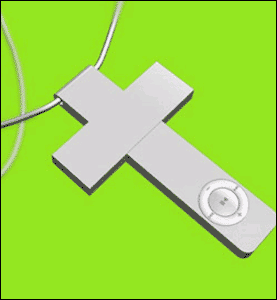 CCV partners with Statewide Coalition to battle Human Trafficking
CCV partners with Statewide Coalition to battle Human Trafficking
What is it?
The fight against human trafficking is not just something that happens over there, wherever “there†is. It is found everywhere we look.
In the home…
Domestic servitude
On the streets…
Prostitution, truck stop solicitation, panhandling
Behind the door…
Massage parlors, Adult (strip) clubs, brothels, pornography
Among respectable businesses…
Sweatshops, construction, tourist industry, agriculture
The U.S. State Department has estimated that between 14,500 – 17,500 people are trafficked into the U.S. annually . Half of this number are children. In the Midwest prostitution, saunas, health clubs, strip clubs, escort services, and brothels to migrant workers are the predominant activities.
Ohio has become a significant hub of activity for human trafficking. Why? Geography and demographics. Lake Erie allows trafficking to move from Canada while the various interstate corridors allow movement of victims to cities throughout the country. The large number of colleges and military bases also contribute to this increase. Cleveland and Columbus have been identified as major cities popular among johns seeking Asian massage parlors acting as fronts for brothels. Toledo has been identified by the FBI as one of the top recruiting centers in the country for underage prostitution.
Linda Smith, founder of Shared Hope International, writes “Young girls are being sold at truck stops, strip joints, massage parlors, and often out of homesâ€. Kathleen Davis, who serves as the Ohio Director for the Polaris Project authored a report titled Human Trafficking and Modern Day Slavery in Ohio. In describing what people are trafficked for, she lists “commercial sexual exploitation, exotic dancing, stripping, and pornographyâ€.
Human trafficking is many times confused with human smuggling. Under U.S. Code 1227, smuggling is defined as “knowingly [having] encouraged, induced, assisted, abetted or aided any other alien to enter or try to enter the United States.â€
The Victims of Trafficking and Violence Protection Act of 2000 defines human trafficking. The Polaris Project has put together a simple matrix to understand the broad scope of this definition. These elements (AMP) include:
The Action to…
recruit, harbor, transport, provide, obtain, subject
By Means of …
force, fraud, coercion, physical restraint, debt bondage, withholding documents, serious harm
For the Purpose of…
commercial sex act / labor or services – resulting in slavery, peonage, or involuntary servitude
Several myths are destroyed in this defining language:
- Many trafficked persons in the U.S. are legal citizens
- Trafficking does NOT require transportation across any state or national borders.
- Prior consent or payment is not relevant (just because you agreed to come and/or were paid does not mean it is NOT trafficking).
- Human trafficking does NOT require physical restraint (may only be psychological)
What is being done?
As CCV has battled the problems of sexually-oriented businesses for decades, they have recognized that human trafficking is one of the primary “feeders†that drive women and young girls into the sex industry. Many other national groups are also addressing this connection.
A press conference was held on July 31st in Columbus to announce a new coalition effort in Central Ohio. Rescue and Restore, a national outreach led by the U.S. Department of Health and Human Services (HHS), has helped establish 20 other coalitions around the country. They seek to bring together a diverse group of stakeholders, including law enforcement, health and social services, non-profits, faith-based organizations, legal aid groups, and others interested in eradicating this form of slavery. The primary tools to accomplish this goal are outreach, education, and victim assistance.
Members of this coalition are receiving training by various advocacy groups (Rescue and Restore, Polaris Project, Catholic Conference, and the Department of Justice). This training includes:
- Increased public awareness
- Provide training to various advocacy and social service groups
- Develop outreach materials to educate the general public
- Provide access to 24/7 hotlines for victim assistance
- Identify and assist victims
- Learn to ask the right questions to possible victim, get beyond the “coached†answers
- Provide needed services (legal, health, and social care)
- Identify temporary housing to provide a safe haven for victims
Further coalition meetings and advanced training will be occurring in the coming months. Also, many coalition members are beginning to meet and share about networking, resource development, and victim assistance services expertise.
How can I learn more?
Rescue and Restore
www.acf.hhs.gov/trafficking
1-888-3737-888
Kathleen Davis, Ohio Director
Polaris Project
www.polarisproject.org
[email protected]
Shared Hope
www.sharedhope.org
 My answer would be: it depends. The last couple generations have been told that a college education is the only way to “succeed†in this world. However, this generation is finding that this mindset is not necessarily true. The following article, http://news.yahoo.com/1-2-graduates-jobless-underemployed-140300522.html, paints a much more realistic view for recent graduates.
My answer would be: it depends. The last couple generations have been told that a college education is the only way to “succeed†in this world. However, this generation is finding that this mindset is not necessarily true. The following article, http://news.yahoo.com/1-2-graduates-jobless-underemployed-140300522.html, paints a much more realistic view for recent graduates.

 By Bruce Purdy
By Bruce Purdy


 CCV partners with Statewide Coalition to battle Human Trafficking
CCV partners with Statewide Coalition to battle Human Trafficking